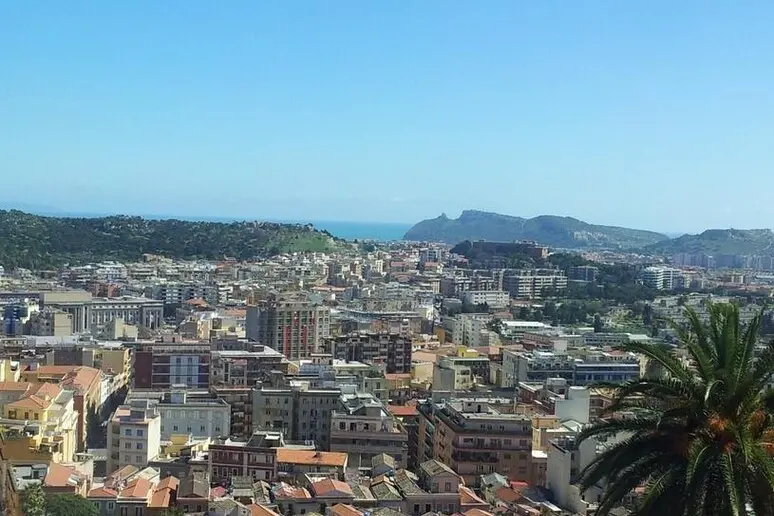Land consumption is booming in Sardinia: solar panels are taking a toll, having quadrupled in a year.
In Italy, new artificial surfaces for nearly 12,000 soccer fields were installed in one year. Green areas in cities are increasingly scarce, and the island has consumed less land overall than other regions, but it is the region with the highest percentage growth.(Handle)
Per restare aggiornato entra nel nostro canale Whatsapp
Land use continues to increase in Italy and Sardinia . This is highlighted by data from ISPRA , which today presented its report "Land use, territorial dynamics and ecosystem services."
In 2024, Italy saw the creation of new artificial surfaces covering nearly 84 square kilometers , a 16% increase over the previous year. With over 78 square kilometers of net land use, this is the highest figure in the last decade, equivalent to nearly 12,000 soccer fields . Every hour, a portion of land equivalent to approximately 10,000 square meters is lost , as if one piece after another were being removed from the mosaic of the land. Infrastructure, buildings, and other artificial surfaces occupy 21,575 square kilometers of Italian territory, or 7.17%. The European average is 4.4% .
In 2024, land was consumed mainly for construction sites and roads (49.15 square km), photovoltaic panels (17.02), new buildings (6.23), paved roads and other transport infrastructure (1.14).
Sardinia, although not among the regions with the highest land consumption, is the one with the highest growth in the last year (+0.83%) . This figure is also due to the proliferation of photovoltaic panels, which quadrupled in the last year (from 423 hectares to 1,700): Sardinia, with its 293 hectares, is one of the regions that dedicates the majority of its land to panels . Only Lazio does worse with its 443 hectares.
Specifically, by 2024 , 15 regions had already consumed more than 5% of their land, with peaks in Lombardy (12.22%), Veneto (11.86%), and Campania (10.61%) . Sardinia (3.39% of land consumed) had one of the lowest figures but recorded the highest percentage growth over the past year (+0.83%), ahead of Abruzzo (+0.59%), Lazio (+0.56%), and Puglia (+0.52%), while Emilia-Romagna stopped at +0.50%. Valle d'Aosta, which remains the region with the lowest consumption, still added more than 10 hectares of new consumption. Liguria (28 hectares) and Molise (49 hectares) are the only regions, along with Valle d'Aosta, with consumption below 50 hectares.
The upward trend in the area of consumed land in areas at risk of landslides has also been confirmed, where the phenomenon, after the slowdown recorded in 2023, is now accelerating again: +1,303 hectares in areas with medium hydraulic risk and +600 hectares in areas at risk of landslides.
Waterproofing continues along the coastal strips, where the percentage of soil consumed in the first 300 metres from the sea is more than triple that of the rest of the national territory (22.9%) , in the plains (11.4%), in the valley bottoms and in agricultural areas close to urban areas.
Land use is growing in protected areas, which now cover an additional 81 hectares, of which over 73% is national (28.7 hectares) and regional (30.8 hectares) natural parks. Finally, in Natura 2000 areas, new artificial surfaces amount to 192.6 hectares (14% more than last year). And the availability of green spaces in cities is decreasing: 2024 will see a further loss of over 3,750 hectares of natural areas .
Then there's restoration , or those areas where the soil returns from an artificial state to a natural one, often due to the removal of construction sites. This process, "slow to take hold in our country, in 2024 affected a total area of 5.2 square kilometers, down from 8.2 square kilometers in 2023," the document states. Too few to reverse the trend.
"The data presented today are the most negative since land consumption data have been published annually : if land consumption is the footprint of the climate crisis, seen from above, then the situation presented for our country appears decidedly critical," reads a statement from Legambiente. "The shift of the phenomenon southward is also worrying: Puglia, Sicily, and Sardinia now reach or exceed the levels of land consumption of traditionally more urbanized regions such as Lombardy, Veneto, Emilia-Romagna, and Lazio."
"More and more concrete on the fields, fewer and fewer inhabitants in the cities," says Legambiente president Stefano Ciafani , "the burden lies on local administrators, but also on an obsolete framework of national and regional regulations, inadequate to provide tools for the sustainable governance of urban and territorial transformations."
(Unioneonline/L)
